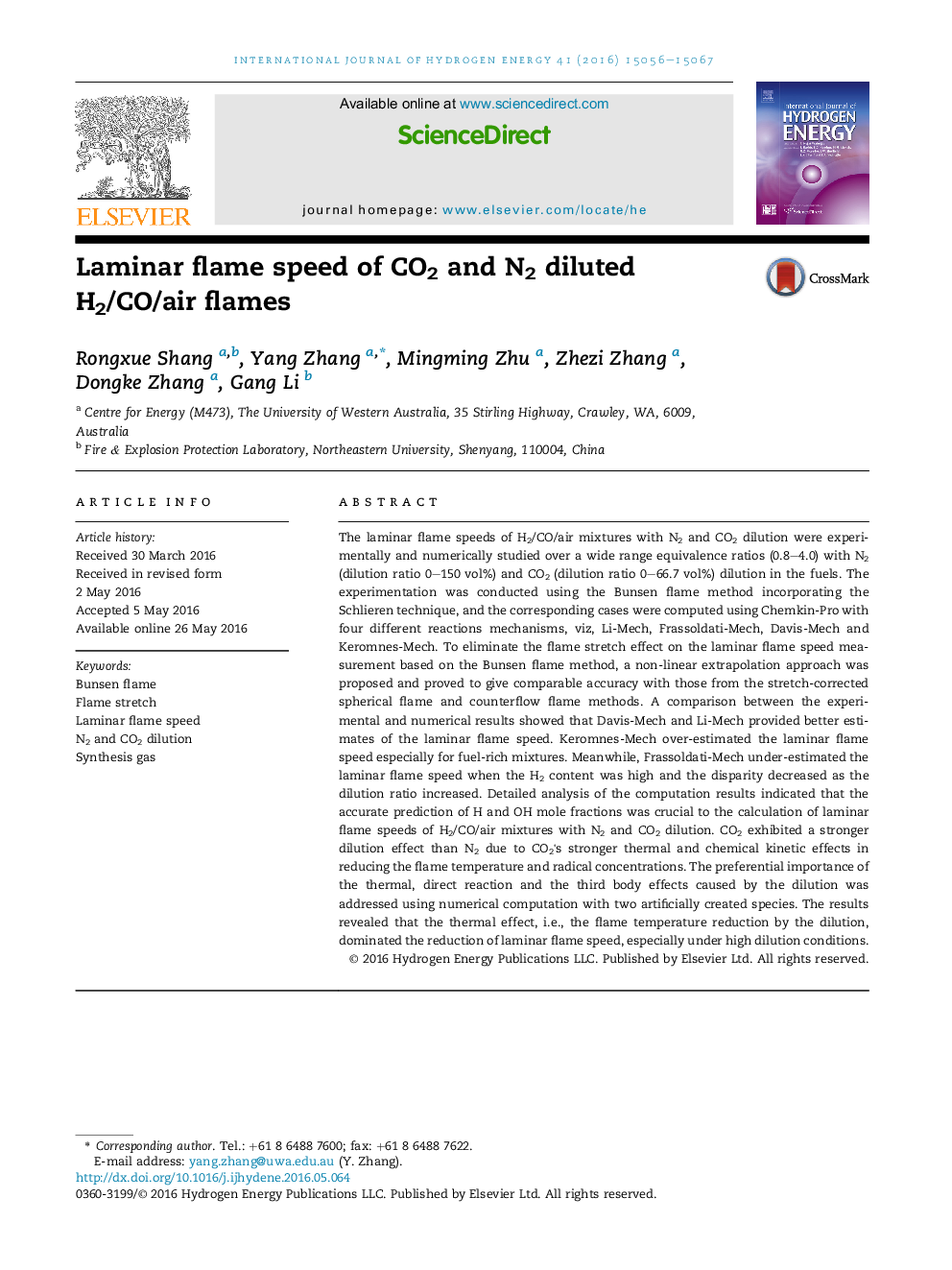| کد مقاله | کد نشریه | سال انتشار | مقاله انگلیسی | نسخه تمام متن |
|---|---|---|---|---|
| 1269380 | 1497392 | 2016 | 12 صفحه PDF | دانلود رایگان |

• A modified Bunsen flame method was proposed to measure the laminar flame speed.
• The laminar flame speeds of N2 and CO2 diluted H2/CO/air flames were studied.
• Davis-Mech and Li-Mech well predicted the experimental data.
• The mole fraction of H and OH was crucial for accurate numerical computation.
• Thermal effect dominated the overall dilution effect.
The laminar flame speeds of H2/CO/air mixtures with N2 and CO2 dilution were experimentally and numerically studied over a wide range equivalence ratios (0.8–4.0) with N2 (dilution ratio 0–150 vol%) and CO2 (dilution ratio 0–66.7 vol%) dilution in the fuels. The experimentation was conducted using the Bunsen flame method incorporating the Schlieren technique, and the corresponding cases were computed using Chemkin-Pro with four different reactions mechanisms, viz, Li-Mech, Frassoldati-Mech, Davis-Mech and Keromnes-Mech. To eliminate the flame stretch effect on the laminar flame speed measurement based on the Bunsen flame method, a non-linear extrapolation approach was proposed and proved to give comparable accuracy with those from the stretch-corrected spherical flame and counterflow flame methods. A comparison between the experimental and numerical results showed that Davis-Mech and Li-Mech provided better estimates of the laminar flame speed. Keromnes-Mech over-estimated the laminar flame speed especially for fuel-rich mixtures. Meanwhile, Frassoldati-Mech under-estimated the laminar flame speed when the H2 content was high and the disparity decreased as the dilution ratio increased. Detailed analysis of the computation results indicated that the accurate prediction of H and OH mole fractions was crucial to the calculation of laminar flame speeds of H2/CO/air mixtures with N2 and CO2 dilution. CO2 exhibited a stronger dilution effect than N2 due to CO2's stronger thermal and chemical kinetic effects in reducing the flame temperature and radical concentrations. The preferential importance of the thermal, direct reaction and the third body effects caused by the dilution was addressed using numerical computation with two artificially created species. The results revealed that the thermal effect, i.e., the flame temperature reduction by the dilution, dominated the reduction of laminar flame speed, especially under high dilution conditions.
Journal: International Journal of Hydrogen Energy - Volume 41, Issue 33, 7 September 2016, Pages 15056–15067